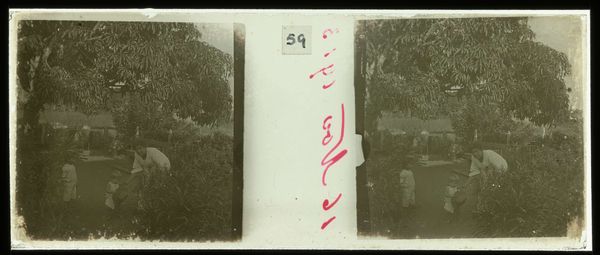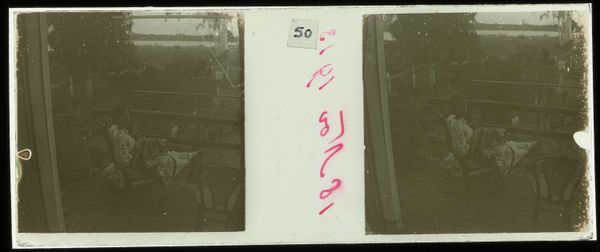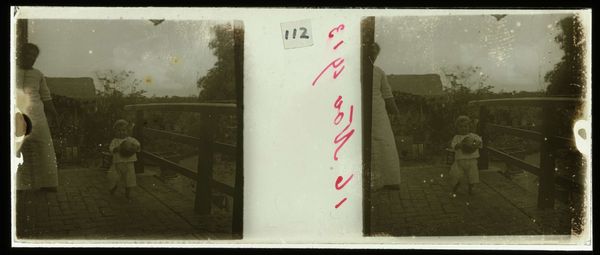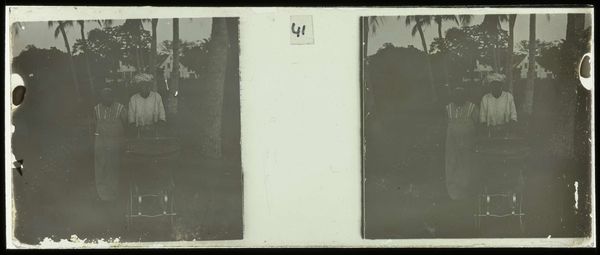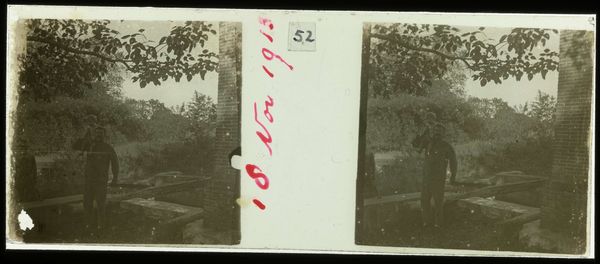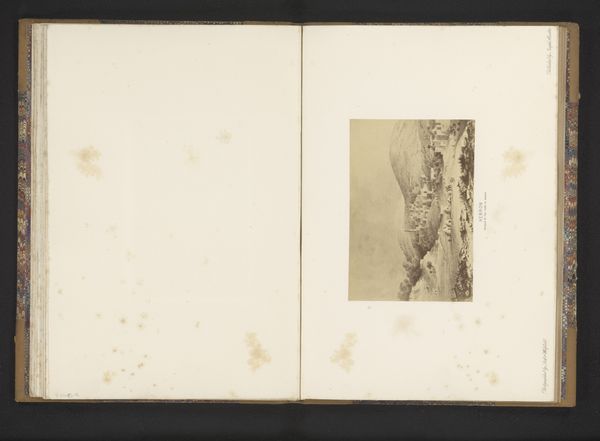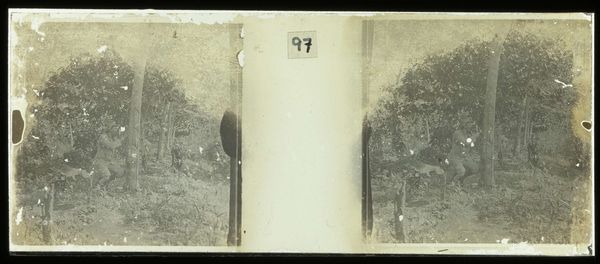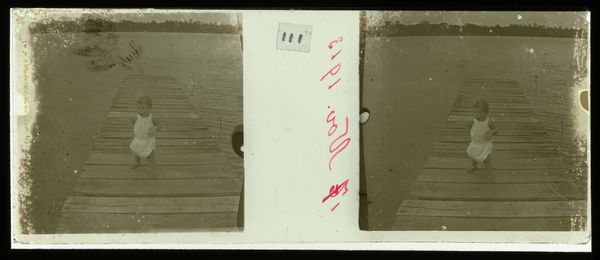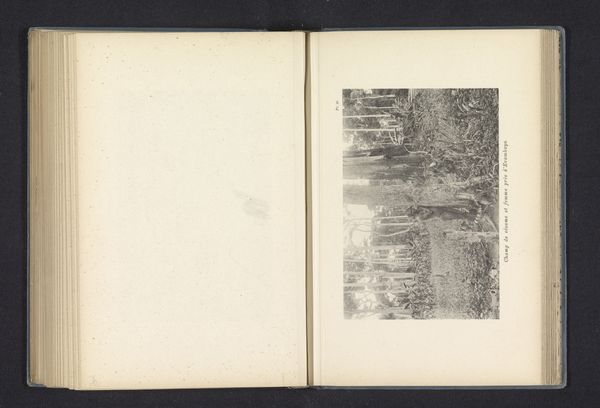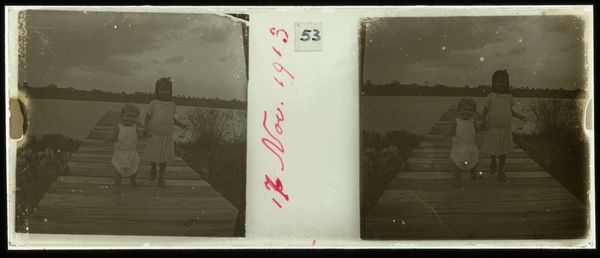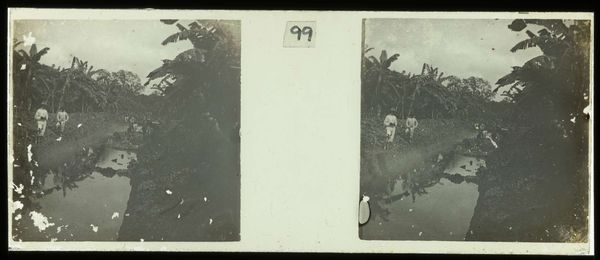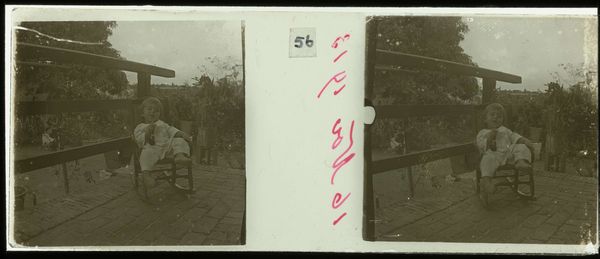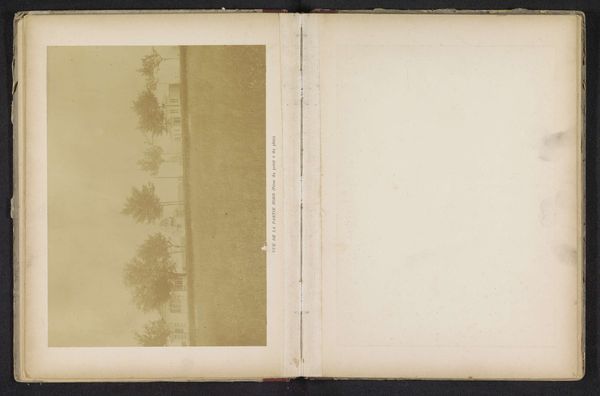
photography, gelatin-silver-print
#
portrait
#
landscape
#
photography
#
gelatin-silver-print
#
realism
Dimensions: height 4.5 cm, width 10.5 cm
Copyright: Rijks Museum: Open Domain
Editor: This gelatin-silver print, "Gerard Brouwers op Plantage Accaribo," possibly from 1913 by Theodoor Brouwers, presents an intimate view of a child amidst lush greenery. I'm struck by the composition; it feels like peering into a lost, perhaps idealized, past. What social or political currents might have shaped the creation of this work? Curator: That's a wonderful observation! The date itself – possibly 1913 – places this photograph within the context of Dutch colonial history and plantation culture. How might Brouwers’ status as part of the colonial establishment affect the way he represented this child and the surrounding landscape? Think about the role photography played at this time - documenting, yes, but also shaping perceptions of the colony. What kind of story is being told, or not told, through this specific lens? Editor: So, it's not just a portrait of a child but a reflection of the photographer's social standing and perhaps even a romanticized view of plantation life? Did the act of photographing itself reinforce colonial power structures? Curator: Precisely. Early photography often served as a tool of power. Consider who had access to cameras, who was being photographed, and for what purpose. By focusing on the child, perhaps Brouwers wanted to project an image of innocence and prosperity within the colony, carefully omitting the harsher realities. How does the inclusion of the landscape function within that narrative? Editor: The landscape feels almost idyllic, obscuring any potential issues with colonization. Thinking about it that way makes me consider what is left *out* of the frame as well. I guess I came in seeing only the charm and now understand how photography can participate in larger political systems. Curator: Indeed. Examining art within its historical and political context allows us to unpack hidden narratives and understand the complex role art plays in shaping our perceptions of the past. The beauty and innocence can be misleading.
Comments
No comments
Be the first to comment and join the conversation on the ultimate creative platform.
